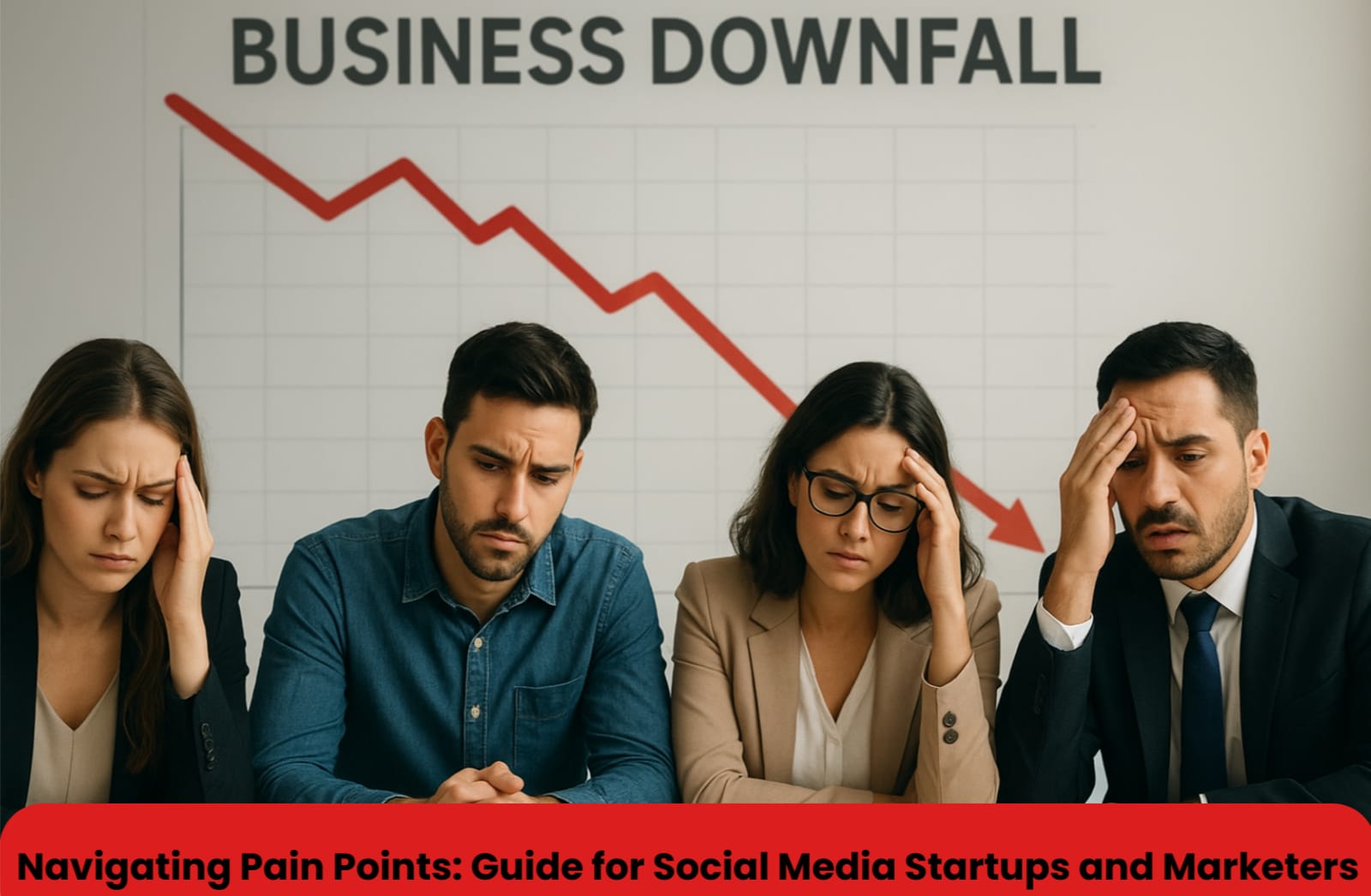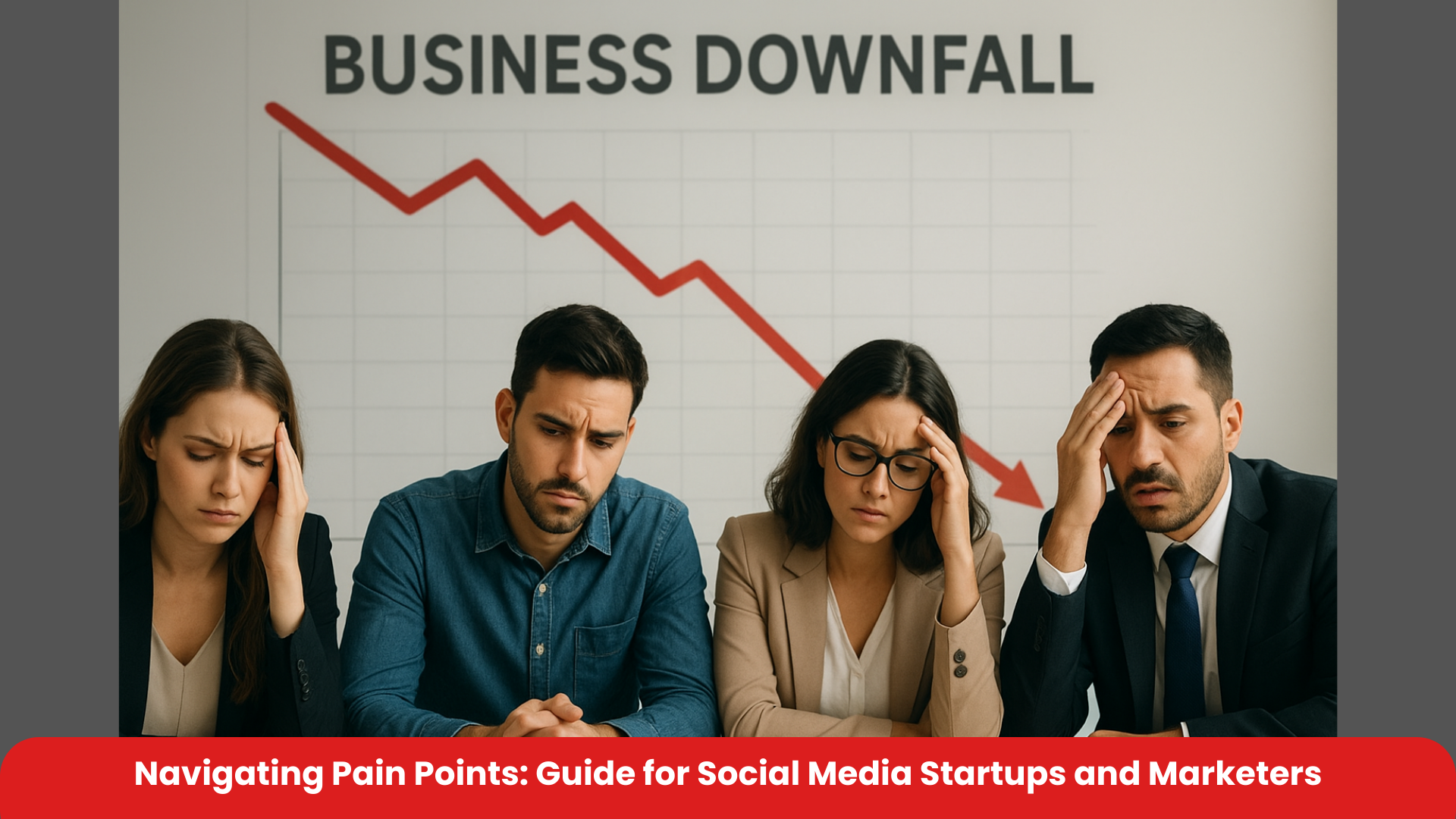

Navigating Pain Points: Guide for Social Media Startups and Marketers
Startups and marketers face unique challenges, especially when leveraging social media the primary channel connecting brands with consumers in 2025. With 72.5% of the U.S. population (approximately 246 million people) actively using social media daily, and social media ad spending projected to reach $276.7 billion in 2025, harnessing these platforms correctly is essential but complex. However, startups also face high failure rates, with 966 U.S.-based startups shutting down in 2024. a 25.6% increase from the previous year attributed to challenges such as lack of product-market fit, cash flow issues, and overvaluation. Navigating these pain points requires up-to-date knowledge of social media trends, data, and targeted strategies.
1. Identifying Core Pain Points for Startups and Marketers in Social Media
A. Startups' Pain Points
Cash flow and Funding Challenges: Many startups fail due to running out of cash and inability to secure further fundraising, worsened by overvaluation and economic shifts.
Product-Market Fit: Lack of fit leads to low customer retention and engagement, impacting social media traction.
High Competition: Saturated startup space makes differentiation on social media platforms more difficult.
B. Marketers’ Pain Points
Constant Algorithm Changes: Social media platform algorithms evolve rapidly, requiring continual strategy adjustment.
Content Overload: Difficulties in breaking through the noise with creative, engaging content.
Measuring ROI: Attribution of social media activities to sales and growth is complex due to multi-touch customer journeys.
2. Market Data and Social Media Trends (Dec 2024 – Jul 2025)
U.S. Market Overview and Trends
Metric
Data (2025) U.S. Population 339.1 million
Internet Users 311.3 million (91.8% of population)
Active Social Media Users 246 million (72.5% of population)
Average Daily Time on Social Media 2 hours 8 minutes Total Social Media Ad Spending $276.7 billion
Social Commerce Sales Expected to exceed $90 billion
Influencer Marketing Expenditure $6.24 billion
Data shows that YouTube, LinkedIn, and Facebook remain dominant platforms, with TikTok and Instagram Reels driving substantial short-form video engagement. Influencer marketing is highly impactful, with brands allocating over $19.26 per internet user for influencer-led campaigns.
3. Strategic Guide to Navigate Pain Points in Social Media Marketing
A. Leverage Short-Form Video to Capture Attention
Short-form video formats (TikTok, Instagram Reels, YouTube Shorts) dominate engagement metrics and help brands reach wider audiences cheaply. For startups, creating authentic and trend-driven videos can boost brand awareness significantly.
Example: Chipotle’s #GuacDance challenge generated over 250K video submissions and 430 million video starts, illustrating mass engagement potential.
B. Adopt AI-Driven Content Creation and Social Listening Tools
Generative AI is mainstream in social media marketing, assisting in fast content creation and personalized responses.
AI-powered social listening refines trendjacking and performance marketing, allowing marketers to adapt quickly to social conversations.
C. Build Influencer Collaborations Carefully
Influencer marketing remains a leading method to build credibility and trust, with $6.24 billion spent in 2025 alone.
Selecting influencers aligned with brand values enhances authenticity and engagement.
D. Focus on Social Commerce to Drive Revenue
U.S. social commerce sales are projected to surpass $90 billion by end of 2025, a crucial channel for startups seeking direct conversion through social platforms.
Integrating seamless shopping experiences within social media improves customer journey and reduces friction.
E. Prioritize Data-Driven Performance Marketing
Brands must integrate social listening and analytics to optimize campaigns and maximize ROI.
Understanding micro-viral trends can allow brands to capitalize on real-time opportunities.
4. Addressing Startup-Specific Challenges Through Social Media
Cash Flow and Funding: Use social media for low-cost, organic growth strategies such as community building and influencer partnerships.
Testing Product-Market Fit: Leverage social media analytics and feedback loops for rapid iteration.
Brand Differentiation: Experiment with creative disruptions in content, avoiding rigid brand consistency for authentic engagement.
5. Outlook & Market Predictions for July 2025 and Beyond
Startup shutdowns may remain high in early 2025 due to capital tightening but should decline gradually as companies mature or pivot.
AI and automation will increasingly dominate social media marketing workflows, allowing leaner teams to produce effective campaigns.
Social commerce will further integrate with AI-driven personalization, enhancing direct-to-consumer sales.
Continued evolution of platform algorithms requires marketers to remain agile and data-savvy.
This guide synthesizes the evolving social media landscape and startup realities from late 2024 into 2025 for marketers and entrepreneurs looking to navigate pain points successfully without falling prey to common pitfalls, while strategically harnessing cutting-edge trends like AI content and social commerce.Navigating Pain Points: Guide for Social Media Startups and Marketers
Startups and marketers face unique challenges, especially when leveraging social media the primary channel connecting brands with consumers in 2025. With 72.5% of the U.S. population (approximately 246 million people) actively using social media daily, and social media ad spending projected to reach $276.7 billion in 2025, harnessing these platforms correctly is essential but complex. However, startups also face high failure rates, with 966 U.S.-based startups shutting down in 2024. a 25.6% increase from the previous year attributed to challenges such as lack of product-market fit, cash flow issues, and overvaluation. Navigating these pain points requires up-to-date knowledge of social media trends, data, and targeted strategies.





